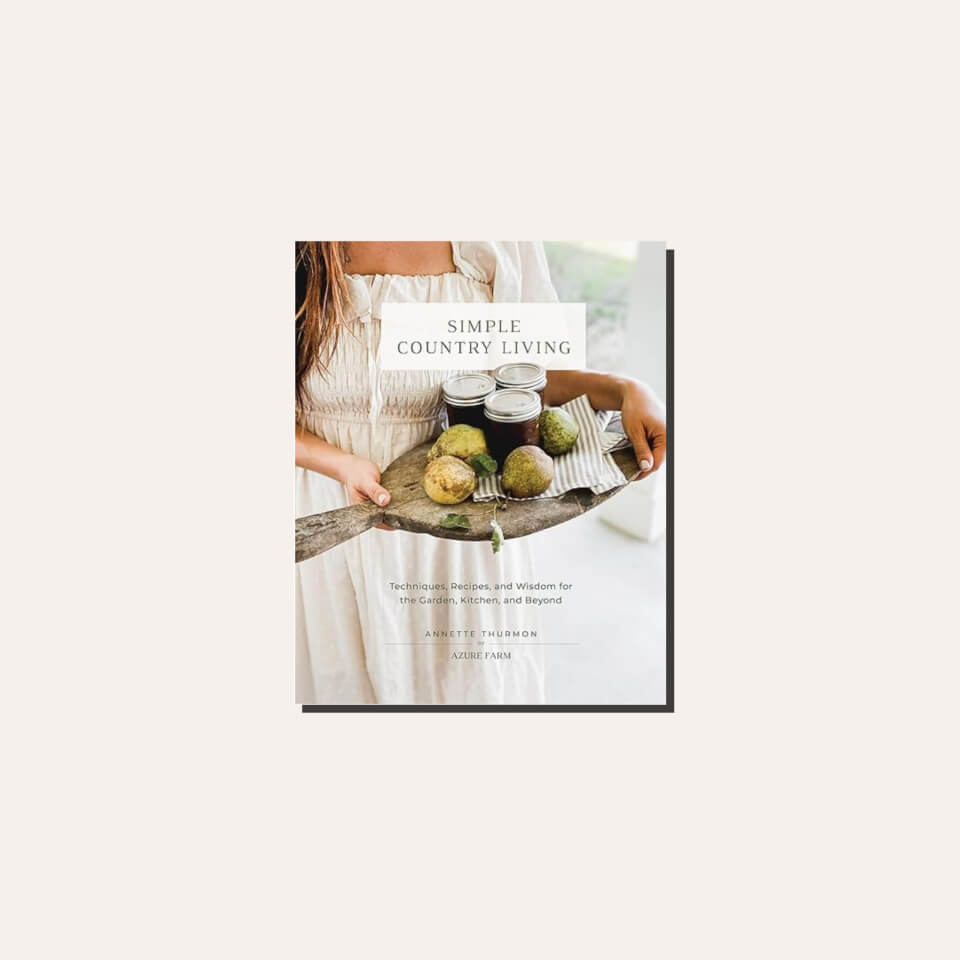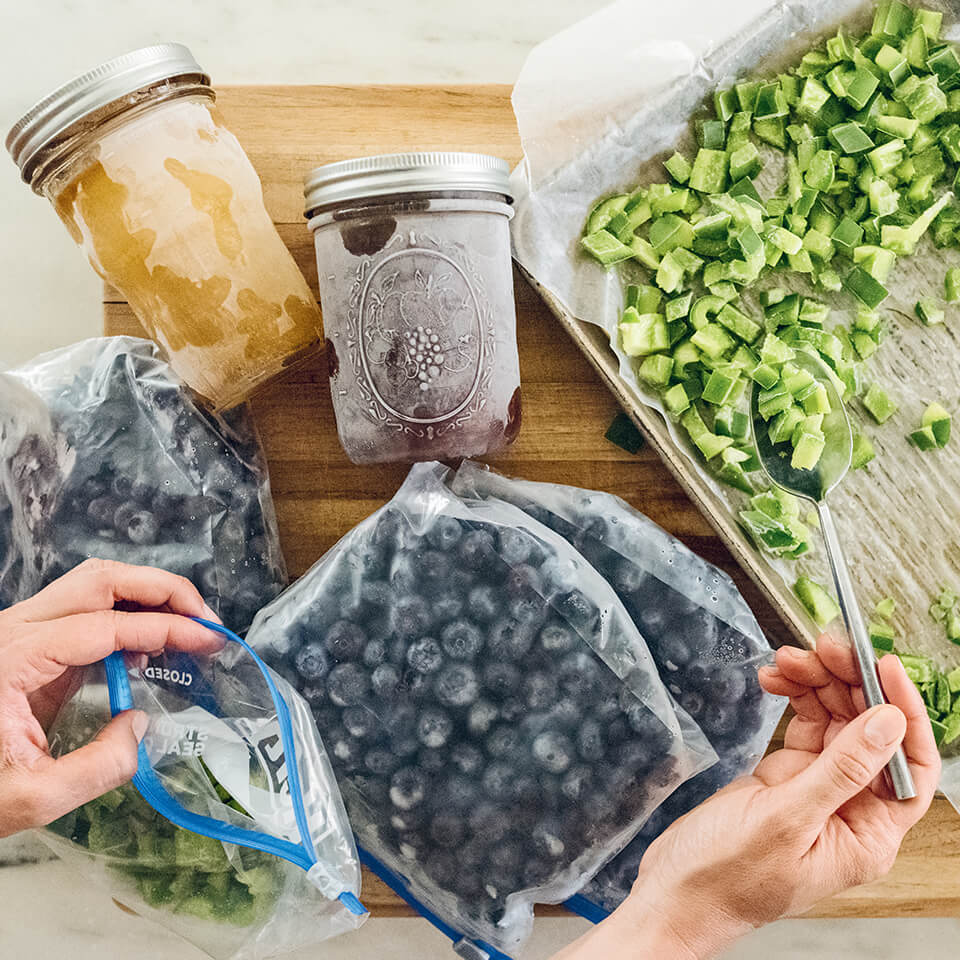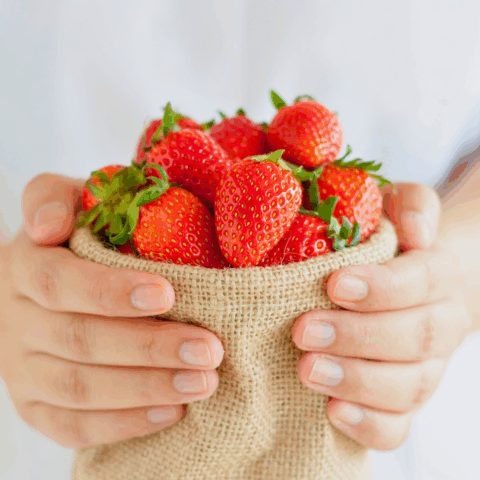When it comes to preserving food, freezing is one of the simplest methods. It requires no fancy steps or added ingredients. It gives you the freedom of long-term food storage while maintaining the quality and taste of many types of food. Freezing allows the flavour to get locked in and taste just as yummy months later when thawed while also maintaining nutritional benefits. Frozen food can keep for about six months to a year, which gives you enough time to eat it all before you freeze more.
Best containers for freezing
- The best way to freeze large amounts of food is in freezer bags. You can lay them flat and label them properly, making your life a whole lot easier. I use them for all my larger and bulkier fruits and vegetables, but not for anything that is cooked or liquid. Always remove as much air as possible from the bag before freezing. Turn the bag on its side, flatten the produce as much as possible and push the air out before quickly closing the seal. You can also suck the air out with a straw.
- Some things, like soup and vegetable stock, I like to freeze in jars because it’s easy and less messy than bags. However, not all jars are freezer safe. A good jar for freezing should have no shoulders, meaning the jar must go straight up and down with no change at the top. If there are shoulders, the jar is not freezer safe. Always leave plenty of headspace at the top of the jar and place it in the refrigerator to cool before placing it upright in the freezer until frozen solid.
- Rigid plastic containers work for sauces, jams and things of that nature. Use molds, such as ice cube trays or silicone molds, to freeze small amounts, then pop them out of the mold and into a freezer bag. Vacuum sealing is an option as well, but it can be expensive. You can achieve similar results without the fancy equipment.

How to freeze fresh produce items
How to freeze berries, cherry tomatoes and peaches
Blueberries are an absolute favourite around here. They are the jewels of summer and the perfect snack on a hot day. They’re simple to freeze because they don’t require any special preparation.
- Don’t wash them first. This might sound strange, but blueberries have a protective coating around them. If you wash them before freezing, they will not keep as well. (You can rinse them right before using them, instead.)
- Place them in a single layer on a cookie sheet and freeze them for about 2 hours.
- Transfer them to an airtight bag, label them, and place them back in the freezer until ready for use.
- You can freeze other berries, cherry tomatoes and peaches this way too.
How to freeze peppers, onions and garlic
Peppers, onions and garlic are some of the easiest kinds of produce to freeze and are an excellent way to add flavour to recipes.
- Wash the peppers first, then cut away the flesh from the stem and the seeds.
- Dice, thinly slice or halve them – however you prefer them cut for using later.
- Pat them dry with a paper towel and transfer them to a baking sheet, spreading the pieces apart so they touch as little as possible.
- Place them in the freezer for 1 hour, then transfer them to a labeled, airtight bag or container.
- Remove as much air as possible before sealing and putting it back in the freezer.
- This same process also applies to onions and garlic. Simply peel them first, then follow the above steps to freeze them.
How to freeze tomatoes
The freezer is a much-overlooked tool for preserving tomatoes. If you plan to use them in the depths of winter for sauces and stews, then freezing is a wonderful option. You can skip the puréeing and canning and just place them straight into freezer bags. Their delicious bright flavour will still shine through when you cook them months later, and you’ll think you’ve gone back to July. You also have the added benefit of having the peels come right off when you thaw them, which is extra handy if you plan to can them later.
- Rinse the tomatoes and pat them dry.
- Remove any green stems and use a paring knife to remove the woody core from the top.
- Place the tomatoes in a labeled, gallon-size (128 oz/3.7 kg) freezer bag and remove as much air as possible from the top before tightly sealing the bag.
- Lay the bag flat to freeze, then thaw as needed for a recipe or canning.
How to freeze fresh herbs
Herbs are something you can grow in abundance even if you only have a small space. When you have a surplus, freezing is a great way to have that fresh taste available year-round.
- How to freeze basil: Basil is synonymous with summer and high on my list of what to preserve, but it tends to burn in the freezer. Coating it with olive oil can help and also makes it easier to break off when needed. For every 2 cups (46 g) of packed fresh basil, add ½ to 1 tbsp (7 to 15 ml) of extra virgin olive oil and gently toss until evenly coated. Pack the leaves into a quart-size (32 oz/908 g]) freezer bag, remove as much air as possible and freeze immediately. Just break off a piece and toss it into your favourite recipe when cooking.
- Other herbs, such as chives, cilantro, dill, oregano, rosemary and sage, don’t need special preparation. Simply rinse, dry and chop them before placing them in a labeled container for use as needed.
- Freeze herbs in cubes: For a quick way to add flavour to sauces or vegetables, freeze herbs in cubes with olive oil. Chop up your herb of choice and add it to an ice cube tray. Top with extra virgin olive oil and freeze. Keep the cubes in a labeled freezer bag. This works well for minced garlic, too.



















